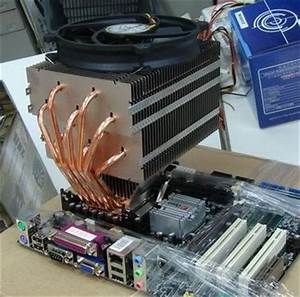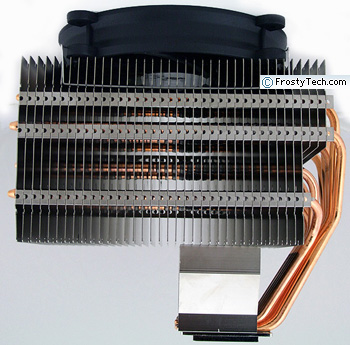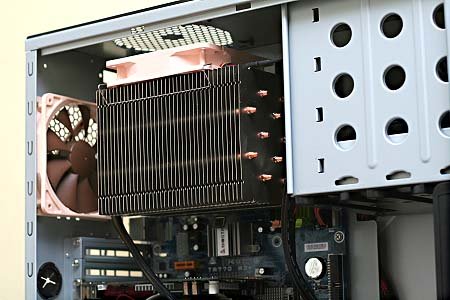I am trying out a Thermalright Silver Arrow IB-E Extreme, a double tower with eight heat pipes and hi-speed TY-143 fans, on this:
SL-relidded 7980xe; Asrock OC Formula; Corsair LPX 4x16 3200; Seasonic Prime Ultra 1000w PSU; Corsair 750D Airflow
In bench tests, the Arrow performs more than two multiplier factors below my custom cooler with an HK IV, EK D5-res and Nemesis 360GTX. For long videofiles using all cores at 100%, the water system cpu reaches 78 deg C after 30 min or so at X46/Vcore 1.200. The Arrow reaches 84 C with X44/Vcore 1.120. I've confirmed that the input air to it is within two deg of ambient 25-26 deg. I was hoping for better, given the huge size of the Arrow, but it seems limited to handlimg 275w tdp at 85 deg on this cpu..
However, when I populated the case, I saw temp during the same test (and several others) elevated by about five deg. Was thinking I needed more/better case fans. Surprise: when I laid the case flat, the temp curve went right back close to the open bench numbers. I have experimented with re-pasting, bracing the Arrow in case it is losing some contact with the IHS, and baffling or blocking the air, and sides on or off, but nothing seems to affect the 4-5 deg improvement when the MB is horizontal. What's going on?
SL-relidded 7980xe; Asrock OC Formula; Corsair LPX 4x16 3200; Seasonic Prime Ultra 1000w PSU; Corsair 750D Airflow
In bench tests, the Arrow performs more than two multiplier factors below my custom cooler with an HK IV, EK D5-res and Nemesis 360GTX. For long videofiles using all cores at 100%, the water system cpu reaches 78 deg C after 30 min or so at X46/Vcore 1.200. The Arrow reaches 84 C with X44/Vcore 1.120. I've confirmed that the input air to it is within two deg of ambient 25-26 deg. I was hoping for better, given the huge size of the Arrow, but it seems limited to handlimg 275w tdp at 85 deg on this cpu..
However, when I populated the case, I saw temp during the same test (and several others) elevated by about five deg. Was thinking I needed more/better case fans. Surprise: when I laid the case flat, the temp curve went right back close to the open bench numbers. I have experimented with re-pasting, bracing the Arrow in case it is losing some contact with the IHS, and baffling or blocking the air, and sides on or off, but nothing seems to affect the 4-5 deg improvement when the MB is horizontal. What's going on?
![[H]ard|Forum](/styles/hardforum/xenforo/logo_dark.png)


